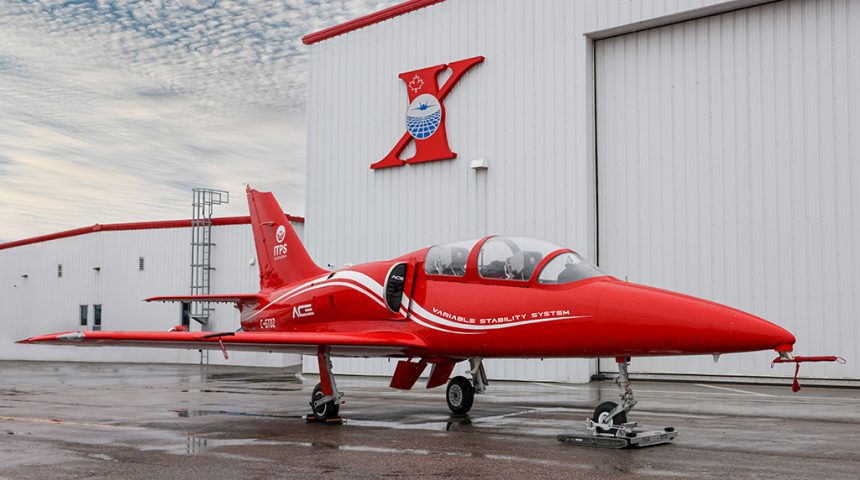Let’s have a look at the Advanced Controls Evaluator (ACE), based on the Aero Vodochody L-39C, presented at the 11th annual Flight Test Seminar of the International Test Pilots School (ITPS).
The International Test Pilots School (ITPS) held its 11th annual Flight Test Seminar just prior to Christmas at its London International Airport, Canada, home base. Highlight of the event, attended by over 150 international guests from industry and air forces, was the roll-out of the Advanced Controls Evaluator (ACE) featuring a Fly-By-Wire (FBW), four-axis variable stability system (VSS) and in flight simulation capability. ACE is based on a substantially upgraded and modified Aero Vodochody L-39C.
A FBW aircraft is one where the pilot’s inputs are digitally signaled from the controls to a flight control computer (FCC) which then signals actuators at the control surfaces to deflect in accordance with programmed flight control laws (CLAWS). A Variable Stability System (VSS), is one where elements of the flight model and CLAWS programmed within the FCC may be accessed and modified, in flight to alter the aircraft’s response to pilot inputs. VSS aircraft allow test pilot trainees to experience different flying qualities in the same aircraft in the same flight, exposing them to desirable and undesirable characteristics and making for very efficient learning.
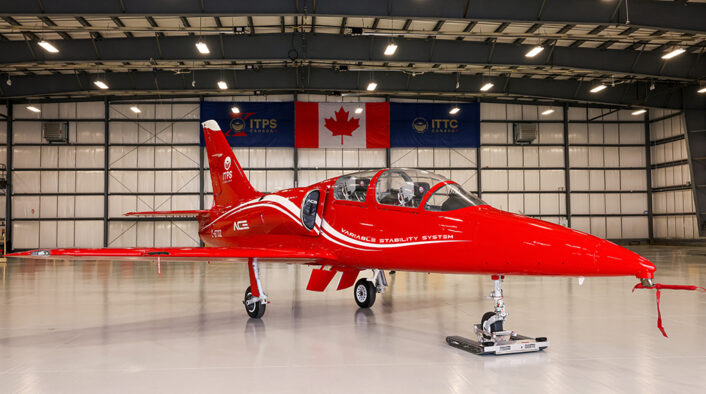
The ACE cockpit features a 5th generation Human Machine Interface including L3Harris Panthr™ Large Area Avionics Display (LAAD) system, sidestick controls featuring programmable hands-on throttle-and stick (HOTAS) from Wittenstein, Germany, suppliers of inceptors for the Korean Aerospace Industries T-50. The cockpit is also equipped with a programmable Heads Up Display and Thales Scorpion Head Mounted Display (HMD) providing trainee test pilots with options for display formats to evaluate.
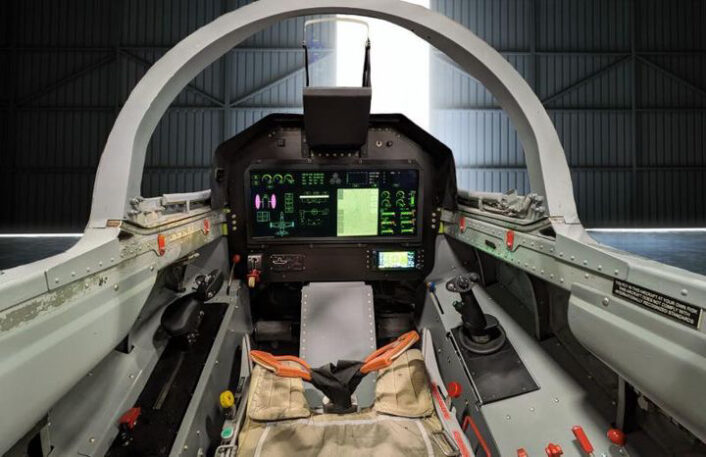
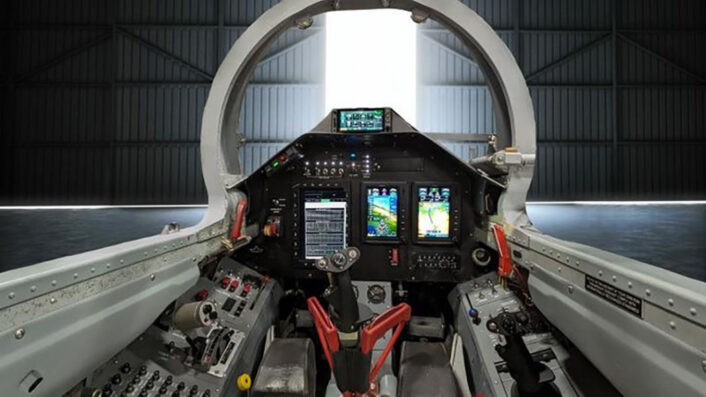
Another key innovation is the ACE’s Embedded Tactical Training System (ETTS) featuring simulated sensors and weapons, integrated with the ITPS Advanced Aircraft Simulation Centre whereby the aircraft can participate in complex simulated operational scenarios whilst it is in flight. This allows the evaluation of avionics and workload in realistic scenarios. All of this latest generation of software and hardware, much of it proprietary and open source to ITPS, provides ITPS trainees with outstanding training value whilst providing the capability to evolve the system to simulate 5th and 6th Gen aircraft.
This Author spoke to ITPS President, Giorgio Clementi about the ACE, he said “When I first started advocating that ITPS would develop its own VSS jet, it seemed like an impossible ambition. Persistence pays and even more so, a great team! ACE will be a game changer in flight test training, bringing very high-level capabilities at an unprecedented price point. It is the first of several that will be made available to industry. We’ve only just begun, and we have many more ideas and ambitions in the works!”
The idea of ACE sparked from Clementi looking into the future and figuring how best to remain relevant in a rapidly and consistently evolving industry where rapid technological development is a given. The majority of test pilot school graduates will go on to test FBW aircraft so it was essential that the school introduce the technology to its fleet. The (not so obvious) answer was to develop a FBW aircraft that was affordable and supportable, in-house. The aircraft should be open to modification and updating allowing the school to keep up with technological developments.
All test pilot schools use VSS aircraft. They are an invaluable tool in teaching Flight Control Systems (FCS) and flying qualities test and evaluation for developing experimental test pilots and flight test engineers. With a few exceptions, such as the USAF owned VISTA F-16 all test pilot schools contract the CALSPAN Lear 25 VSS which is an excellent tool, but costly. With dramatically increasing students numbers and a complex schedule, ITPS needed an independent, in house VSS capability.
Clementi added “Approximately seven years ago, considering the need for a FBW aircraft and looking ahead at the cost of contracting out VSS training I decided that developing an in-house VSS capability was an essential investment. Initial research took approximately two years, and the project was formally launched three years ago.”
The ACE VSS represents the future of test pilot school flight training. The aircraft allows the introduction of concepts of FBW FCS test an evaluation from the earliest phases of the flying qualities curriculum. The programmable throttle and stick allow the exploration of the impact of inceptor characteristics on aircraft handling qualities prior to exploring stability in each axis. Students can experience different levels of stability in one flight, similar to flying three different aircraft in one flight. The goal being to compare flying qualities to specification and mission requirements. In addition, they can be exposed to different CLAWS in one flight and gain an understanding of the difference in aircraft response based on the CLAWS strategy.
Their job as experimental test pilots will be to be providing feedback to engineers during the optimization of flying qualities of new aircraft. It is essential that they fully grasp these concepts. With ACE, ITPS can fully address this vital instruction from the earliest phases of the training.
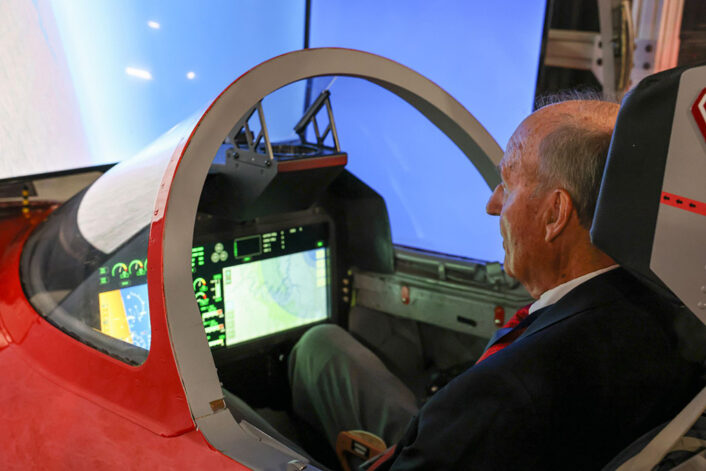
Considering 5th and 6th generation aircraft the pilot will be responding to information presented to them on the LAAD and Helmet Mounted Display. The symbology characteristics will influence pilot response which in turn will determine their inputs on the controls in critical flight phases. It was essential therefore to equip ACE with a representative Human Machine Interface (HMI). The pilots can even be exposed to adverse characteristics to provide essential learning, not possible on frontline operational aircraft.
As experimental test pilots, they will be the last line of defence for the operational pilots, ensuring they receive a system that is fit for the intended mission in operational theatres. Joe asked Clementi how ACE aids those pilots heading into theatre, he responded with “Operating ACE we have the flexibility to present students with realistic mission scenarios and have them evaluate the particular configuration’s suitability for the intended mission. Because all ACE’s systems are open source and proprietary to ITPS the school is able to modify the system, introduce new capabilities, avionics, and HMI concepts into the future. Flying Ace is a huge advantage for our students to have access to advanced technologies and be capable of taking that knowledge and skills back to their nations.”

